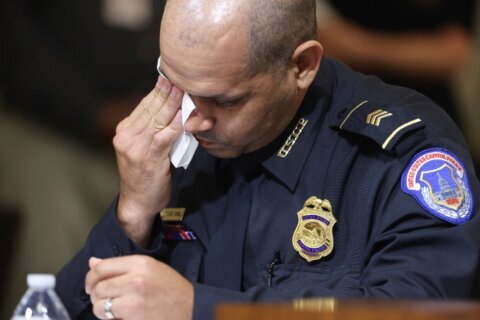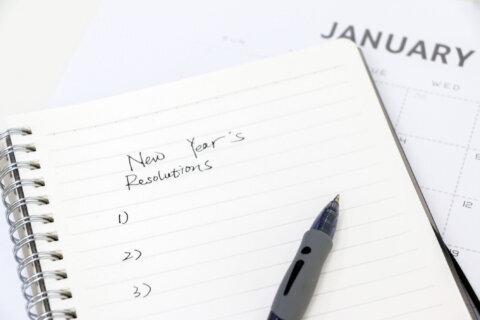Reporters covering the Sept. 11, 2001 attacks told the world the who, what, where, when, how, while searching for the why — those basics haven’t changed.
But thinking back on how the WTOP news team and I covered the attack on the Pentagon, the ways we got the news, and got it to our audience, have changed a lot.
I headed to Reagan National Airport Sept. 11, 2001, shortly after the second plane had hit the World Trade Center in New York City. I had no idea that minutes later I would be reporting on the crash of a third plane into the Pentagon.
After my first report from the Pentagon, I heard on the police scanner that another plane was believed to be headed toward the area. I tried to get a phone call through to the newsroom, but I couldn’t.
That day was six years before the first iPhone was released, five years before Twitter and three years before Facebook. Today, these are considered required tools for a reporter’s job. But back then, many reporters still relied on landlines or pay phones.
If you recall, it was nearly impossible to make a cellphone call in the middle of the story, so I relied on a tiny alternative communication device clipped to my belt: a Motorola pager.
“These were text only,” WTOP Technology Manager Brian Oliger recently remembered, “so there were no photos, no videos, certainly.”
With my thumbs, I typed: “Unconfirmed report. Arlington police say FAA warning another hijacked plane fifteen miles from Pentagon and heading toward.” I hit Enter, and hoped the message would transmit.
What if social media existed?
Radio and television stations and cable news networks shifted into overdrive, with reporters on the scene scrambling to interview witnesses. It would be years before mobile technology would allow eyewitnesses to tell their own stories on Twitter, Facebook and Instagram. But what if they had existed back then?
“A lot of people would have been posting to social media very quickly,” said Kelly McBride, senior vice president of the Poynter Institute. “It would have been a lot noisier.”
The online platforms have allowed for the near-instantaneous spread of information. Public safety agencies and news organizations are able to provide potentially lifesaving information and guidance quickly.
But misinformation can also spread just as fast. Even trained journalists, observing age-old guidelines on reporting facts to the public in an impartial manner, got some things wrong on Sept. 11, and “that misinformation would probably have traveled a lot further, a lot faster, if we had been in the era of social media,” McBride said.
- Teaching Sept. 11 as history: ‘We could do a better job’
- How events such as Sept. 11 have affected our collective mental health
- The three men who guided millions of Americans through the day’s horrors
- US to review 9/11 records with eye toward making more public
In addition, most people who post on social media don’t follow the same rules journalists use.
“For instance, a photographer covering an event does several things. He edits and selects the best images, knowing a thousand images that are similar are going to be less powerful than one brilliant, well-crafted image,” McBride said. “Selection is something that journalists do, that social media doesn’t encourage.”
A viral image, shared by an eyewitness, often doesn’t include many of the elements that would be in a journalist’s report: “Context, adding name, date, location, broader information that you need to know,” she said.
Despite the modern ease of capturing and sharing images, McBride said well-reported stories, then and now, differentiate journalists from others posting on social media.
Immediately after the Sept. 11 attacks, journalists sought to answer key questions: “First, it was which planes were involved,” McBride said. “It was journalists who understood, and were well-sourced in the airline industry.”
Within hours, it was clear American Airlines Flight 11 and United Airlines Flight 175 had been flown into the World Trade Center towers; American Airlines Flight 77 crashed into the Pentagon, and United Airlines Flight 93 crashed in a field near Shanksville, Pennsylvania.
That day, reporters working sources in the airline industry and intelligence community gathered the names of people on the plane, including the terrorists responsible for the attacks.
And soon after, “We knew that they had trained to fly planes, here in Florida. And the guy who had trained them called the FBI to say he was concerned that these guys only want to learn how to fly the plane, not how to land it.”
Those insights provided new details about motive and the preparations for the attacks. And they weren’t gathered with the newest technology, said McBride: “That was all shoe-leather journalism.”








